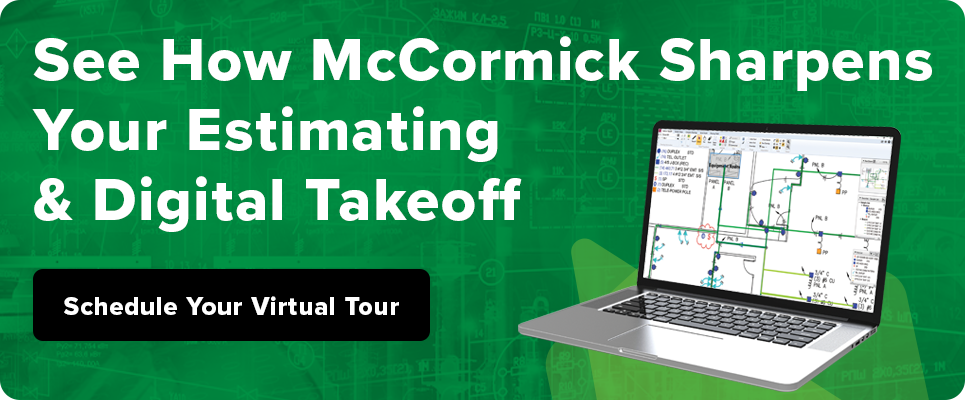
by Paul Wheaton
July 28, 2023
The Biden-Harris administration recently announced the Solar and Wind Grid Services and Reliability Demonstration Program. This $26-million program is part of the Bipartisan Infrastructure Law and will create new sustainable energy jobs for the American people. The goal of this program is to demonstrate how the U.S. power grid can run on 100% clean energy.[1]
Check out our article about Electric Vehicle Charging Stations and the opportunity it offers electrical contractors.
What is the Solar and Wind Grid Services and Reliability Demonstration Program?
The Solar and Wind Grid Services and Reliability Demonstration Program was put in place to support projects that will prove our electricity grid can reliably use a combination of solar power, wind power, energy storage, and other clean energy sources.[2] This program is being funded by the Bipartisan Infrastructure Law.[3] As the government continues to invest in sustainable energy alternatives, electrical contractors should expect to bid on these jobs in the future.
The United States’ power grid is notoriously unreliable.[4] A number of elements, including cyber-attacks, extreme weather, wildfires, and physical accidents, all threaten to dismantle its integrity on a regular basis.[5]
Our electricity grid was originally designed to deliver power from a few large fossil fuel power plants.[6] Today, it uses a mix of traditional and renewable energy sources.[7] According to the University of Michigan, about 79% of the nation’s energy comes from fossil fuels, 8.4% from nuclear and 12.5% from renewable sources.[8] While wind and solar energy are the most rapidly growing renewable sources, they currently contribute just 5% of the total energy used in the U.S.[9]
Before the U.S. can transition to a cleaner energy sector, it’s crucial that solar power, wind power and energy storage can prove their ability to support the grid under normal and emergency situations.
The DOE has already invested in developing tools to manage this complex network, but in order to increase renewable energy resources, there is a need to demonstrate their effectiveness on a larger scale.
The Solar and Wind Grid Services and Reliability Demonstration Program aims to show how clean energy resources can help support and solve these reliability concerns.[10] By utilizing clean energy sources and developing and testing tools and functions, energy workers can ensure that the grid stays online even during disruptions. Lawmakers also aim to ensure the grid can recover quickly if and when it goes down.
The demonstration projects will provide data that will underscore how the goal of 100% clean electricity by 2030 can be achieved while supporting grid reliability.[11]
Through the Solar and Wind Grid Services and Reliability Demonstration Program, eight projects received funding to show how large-scale solar power, wind power, and energy storage can effectively support the grid.[12] These projects will automatically adjust to changes in demand and disruptions. To be eligible for funding, projects must be tested at a plant that generates at least 10 megawatts of power and uses solar power, wind power, or other clean energy generation or storage technologies. The projects will also demonstrate how a clean energy grid can prevent blackouts by quickly identifying and responding to faults.[13]
The U.S. Department of Energy Solar Energy Technologies Office and Wind Energy Technologies Office announced this Grid Services funding opportunity on Aug. 2, 2022, and the eight selected projects on May 10.[14]
What is the DOE’s New Building a Better Grid Initiative?
To supplement the Solar and Wind Grid Services and Reliability Demonstration Program, the DOE is investing more than $20 billion into the Building a Better Grid Initiative to make improvements and modernize the power grid.[15]
This Initiative aims to make the U.S. power grid more resilient to the impacts of climate change, increase access to affordable and reliable clean energy, and create good-paying American jobs across industry sectors.[16] Activities supported under the Building a Better Grid Initiative will complement the planning and approach that is required for a successful transmission and distribution network.[17]
Through the new Building a Better Grid Initiative, the DOE is investing more than $20 billion in federal financing tools, including the Bipartisan Infrastructure Law’s new $2.5 billion Transmission Facilitation Program.[18] They are also putting $3 billion into the expansion of the Smart Grid Investment Grant Program. More than $10 billion will go toward grants for States, Tribes, and utilities to enhance grid resilience and prevent power outages.[19]
To view a full list of projects supported under the Build a Better Grid Initiative, visit https://www.energy.gov/gdo/building-better-grid-initiative.
With so much funding being poured into solar and renewable energy projects, electrical contractors should expect to bid on these projects in the future. Read on to learn more about what these new programs mean for electrical contractors and how you can optimize your chances of winning these jobs.
What Impact Will the Building a Better Grid Initiative Have on the Electric Industry?
The Building a Better Grid Initiative is anticipated to create more jobs for the American people—especially those working in the electric field. If you own or work for an electric company, it’s more than likely that you’ll have the opportunity to bid on a solar job funded by the Build a Better Grid Initiative sometime in the near future!
Who Will be Needed for Solar and Renewable Energy Jobs Under the Building a Better Grid Initiative?
The Building a Better Grid Initiative will create jobs for a variety of professionals. Electrical contractors working on these renewable energy jobs may need to work hand-in-hand with other industry experts in order to meet codes, regulations, and standards.[20]
- Electricians: Skilled electricians play a crucial role in installing and connecting solar panels, wind turbines, and energy storage systems to the electrical grid. They ensure the safe and efficient wiring of these systems and handle any electrical connections or modifications required.
- Engineers: Solar and renewable energy projects require engineers with expertise in electrical engineering, mechanical engineering, and civil engineering. They will be involved in designing and optimizing the infrastructure, including solar panels, wind turbines, and energy storage systems.
- Data Analysts: With the increasing complexity of the grid and the need for real-time monitoring, data analysts, including those with electrical expertise, will be essential. They will analyze the data collected from various sources, such as solar and wind generation, energy storage, and grid performance.
- Environmental Specialists: Given the focus on clean energy, environmental specialists will be involved in assessing and mitigating any potential environmental impacts associated with the installation and operation of solar and renewable energy projects. Electrical contractors may need to work in compliance with environmental regulations and standards.
- Educators and Trainers: To ensure a skilled workforce for the future, educators and trainers, including electrical contractors with expertise in renewable energy systems, will be needed to provide specialized training programs and educational resources for individuals interested in pursuing careers in solar and renewable energy.
Depending on the specific project, other professionals may be required. The Building a Better Grid Initiative aims to create job opportunities across various sectors while promoting a transition to a clean energy economy. Electrical contractors will play a vital role in the installation, maintenance, and connection of solar and renewable energy systems.
What Are the Requirements for Contractors Working on Projects Funded by the Building a Better Grid Initiative?
Specific requirements for completing renewable energy jobs will vary by state. For more information on state-specific requirements, visit www.afdc.energy.gov/laws.
It’s important that contractors familiarize themselves with their state’s requirements, as some jurisdictions may have specific rules and regulations. For example, Texas law requires anyone installing or offering to install a solar system on a business to have a Texas Electrical Contractor’s License (TECL) from the Texas Department of Licensing and Regulation. These contractors must also ensure the company’s TECL is clearly written on all proposals, contracts, invoices, and business cards.[21]
Some contractors who are interested in solar and renewable energy jobs may need to acquire additional training or certifications. Outside of state-specific, general prerequisites typically include:
- Licensing and Certification: Contractors are required to hold jurisdiction-appropriate licenses and certifications specific to the given renewable energy project. These licenses demonstrate that the contractor has the necessary knowledge and expertise to perform the work.
- Insurance and Bonding: Contractors are often required to carry liability insurance and may need to be bonded. Insurance provides protection in case of accidents, damages, or injuries that may occur during the project, while bonding ensures financial security and compensates for any breaches of contract.
- Technical Expertise and Training: Contractors working in the solar energy and renewable energy sector should have the technical expertise to handle the installation, maintenance, and troubleshooting of the systems. This includes knowledge of electrical components, wiring, system design, and equipment specific to solar and renewable energy technologies.
- References and Reviews: Contractors may be asked to provide references from previous clients or project owners. Reviews and testimonials from satisfied customers can demonstrate the contractor’s professionalism, reliability, and ability to meet project requirements.
Are There Specific Dates When the Solar and Wind Grid Services and Reliability Demonstration Program and the Building a Better Grid Initiative Jobs Can Be Bid On?
Funding will continuously be rolled out through the Building a Better Grid Initiative and others as we move into the future.[22] Contractors should stay up to date with the latest news from the Department of Energy’s Grid Deployment Office to learn when these opportunities arise. Their website can be found at https://www.energy.gov/gdo/grid-deployment-office.
What Will the Bidding Process for Jobs and Funding Offered Under the Building a Better Grid Initiative?
The bidding process for electrical jobs related to the Building a Better Grid Initiative will likely follow the same steps as other government-funded jobs:
- Request for Proposal (RFP): The project owner will begin by releasing an RFP detailing the wind or solar energy project’s scope, requirements and submission guidelines.
- Pre-Bid Conference: In some cases, electrical contractors may have the opportunity to attend a pre-bid conference to gather additional information and ask questions regarding the solar project.
- Bid Submission: Contractors should prepare and submit their bids for the sustainable energy project according to the instructions provided in the RFP. Bids typically include cost estimates, proposed timelines, qualifications, and references. The more sustainable energy projects that contractors take on, the more references they’ll have to secure these jobs in the future.
- Create an Outline: Plan your bid strategically. An outline will help ensure your proposal remains on target with anticipated contract goals. An outline can also help to reduce the risk of omitting imperative information by mistake, which is important for winning these government-funded jobs.
- Write Your Proposal: In your proposal, you must clearly define how you will fulfill the goals of the contract. It is best practice to highlight your crew’s strengths and clarify why your solution is the most efficient and cost-effective option. If you have worked on solar and wind projects in the past, you might consider including this in your proposal.
- Price Competitively: It is often a requirement that federal contracts are awarded to the contractor who can complete the project for the lowest price while fulfilling all legal requirements and not sacrificing quality. Use relevant market research to ensure you are pricing the sustainable energy project competitively.
- Submit Your Proposal… and Wait: Submit your proposal for the sustainable energy project to the appropriate location and get ready to wait for a reply. Depending on the scope of the project, contractors can typically expect to wait anywhere from 30-120 days for a reply from a federal agency.[23]
- Evaluation and Award: After the project owner evaluates all the submitted bids for the solar or wind project, the contract will be awarded to the bidder who best meets the project requirements. Project requirements can be based on various criteria, such as cost, experience, and technical expertise.[24]
Why Would I Want to Work Construction Jobs Funded by the Build a Better Grid Initiative?
According to the Department of Energy, the Building a Better Grid Initiative is supercharged for action in 2023 and beyond.[25] With the United States’ goal of achieving 100% clean electricity by 2030, contractors can be assured clean energy jobs are the way of the future.
Getting involved with the Build a Better Grid Initiative as soon as you are able can offer both short-term and long-term benefits:
Short term:
- Job Opportunities: The development of renewable energy has already begun to create a surge in demand for electrical professionals. Getting your foot in the door now will help you to take advantage of these opportunities before the market becomes oversaturated. Entering into the market at its beginning stages, contractors may benefit from having less competition.
- Industry Growth: The renewable energy market is experiencing rapid expansion as more consumers opt for sustainable alternatives. Contractors who choose to work these solar and wind energy jobs will be at the forefront of a growing industry, gaining valuable experience and expertise in a promising sector.
- Skill Development: Learning how to install and operate on sustainable energy alternatives — and gaining experience doing so — will enhance your skills and expand your knowledge of these new, cutting-edge technologies. This can lead to professional growth and increased marketability in the rapidly growing electrical industry.
Long term:
- Job Stability: By learning how to work with solar and sustainable energy alternatives and building a track record of success in the field, contractors can position themselves to become leaders in the renewable energy sector. This will help electric contractors to garner steady employment over the next several years.
- Technological Advancement: Solar and renewable energy alternatives are continually evolving, presenting opportunities for ongoing learning and innovation. By working on these jobs, you can stay on top of the latest advancements in renewable energy systems, positioning yourself as a valuable asset in an ever-evolving field.
- Career Diversification: The skills acquired through working on solar and renewable energy jobs can help to diversify your skill sets, positioning you to acquire new jobs as technology continues to advance.
How Can I Prepare to Work Solar Energy Jobs?
Contractors looking to increase their chances of working on solar and sustainable energy jobs as offered by the Building a Better Grid Initiative can take the following steps:
- Stay Informed: Check updates and announcements from government agencies, industry associations, and local authorities to stay informed about upcoming projects and bidding opportunities.
- Enhance Skills and Knowledge: Consider investing in training programs or certifications that specialize in solar and sustainable energy alternatives, installation of these technologies, and maintenance. This will equip you with the necessary skills and demonstrate your commitment to the field.
- Pro Tip: Begin researching what training or certification your state requires to install solar and sustainable energy alternatives and go from there.
- Build Industry Connections: Network with other local electric professionals to help stay “in the know” about potential job openings, partnerships and subcontracting opportunities. Attend industry events, conferences, and trade shows to expand your professional network.
- Familiarize Yourself with Regulations: Stay updated on regulations, codes, and standards related to solar and renewable energy jobs.
How Can Electrical Estimating Software Help Win Solar Energy Jobs Offered Under the Building a Better Grid Initiative?
Under the Infrastructure Act, the current administration plans to achieve 100% clean electricity by 2030 while maintaining a reliable grid. Many diverse groups are encouraged to apply for funding. As more solar and renewable energy jobs become available, digital estimating software can help contractors bid on renewable energy projects with ease.
Contractors can use electrical estimating software to give themselves an edge over their competition in the bidding stage. Electrical estimating software can:
- Ensure Accuracy: Estimating software removes the potential for human error, ensuring you’re always submitting an accurate proposal. It is important that contractors submit accurate proposals, especially when bidding on federally funded projects, like those offered un the Building a Better Grid Initiative.
- Save Time: Some estimating software comes with features like preloaded databases that feature labor units, items, and assemblies. For solar projects, these may include solar panels, racking, conduit and wiring, inverters, battery connections, and much more. These items can help contractors to save time while completing the estimate.
- Save Money: Since estimating software helps contractors to complete estimates faster, you can expect your team to spend less time in the office crunching numbers and more in the field, installing solar panels and creating a future run by sustainable energy. Optimizing your crew’s work hours will ultimately help to save you money.
McCormick Systems provides contractors with all these features and more. McCormick offers the electrical estimating software contractors need to perform the fastest, most efficient bids.
Regardless of which takeoff and estimating solution contractors choose, taking on sustainable energy jobs today is sure to secure their future in the industry through job opportunities, growth, and skill development.
The Solar and Wind Grid Services and Reliability Demonstration Program and the Building a Better Grid Initiative are steps toward a greener, more sustainable future for the United States. As renewable energy options become more commonplace, our reliance on fossil fuels will be reduced. This endeavor will help to ensure we can enjoy a happy, healthy environment for years to come.
Electrical contractors should begin taking steps today to ensure they can take part in these exciting and new technological developments.
For more information on these profitable opportunities and how McCormick’s electrical estimating software can help, click here!
[1] https://www.energy.gov/articles/biden-harris-administration-announces-26-million-program-bipartisan-infrastructure-law
[2] Ibid.
[3] Ibid.
[4] https://www.instituteforenergyresearch.org/greatest-threat-power-grid-govt/
[5] https://www.americansecurityproject.org/climate-energy-and-security/energy/threats-to-the-energy-grid/
[6] Ibid.
[7] Ibid.
[8] https://css.umich.edu/publications/factsheets/energy/us-renewable-energy-factsheet#:~:text=About%2079%25%20of%20the%20nation’s,and%2012.5%25%20from%20renewable%20sources.
[9] https://www.eia.gov/totalenergy/data/monthly/
[10] https://www.energy.gov/articles/biden-harris-administration-announces-26-million-program-bipartisan-infrastructure-law
[11] Ibid.
[12] https://www.energy.gov/articles/biden-harris-administration-announces-26-million-program-bipartisan-infrastructure-law
[13] Ibid.
[14] https://www.energy.gov/eere/solar/solar-and-wind-grid-services-and-reliability-demonstration-funding-program#:~:text=Pacific%20Gas%20and%20Electric%20Company
[15] https://www.energy.gov/articles/biden-harris-administration-announces-26-million-program-bipartisan-infrastructure-law
[16] https://www.energy.gov/gdo/building-better-grid-initiative
[17] Ibid.
[18] https://www.energy.gov/articles/biden-harris-administration-announces-26-million-program-bipartisan-infrastructure-law
[19] Ibid.
[20] https://www.indeed.com/career-advice/finding-a-job/career-in-solar
[21] https://txses.org/choosing-a-solar-installer/#:~:text=Texas%20law%20requires%20anyone%20installing,Licensing%20and%20Regulation%20(TDLR).
[22] https://www.energy.gov/gdo/articles/look-ahead-building-better-grid-2023
[23] https://potomacofficersclub.com/articles/how-to-win-a-government-contract-bid-in-10-steps/
[25] https://www.energy.gov/gdo/articles/look-ahead-building-better-grid-2023
Share Article


